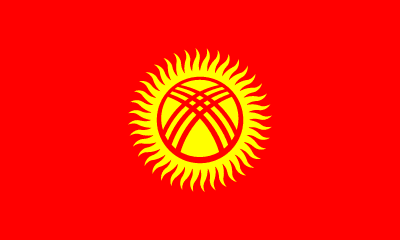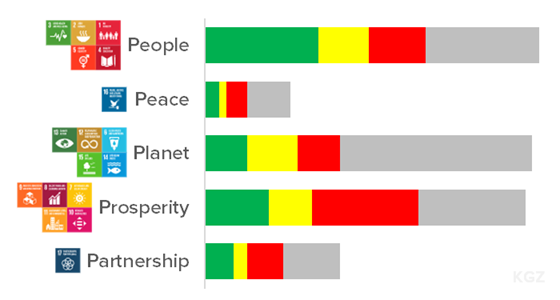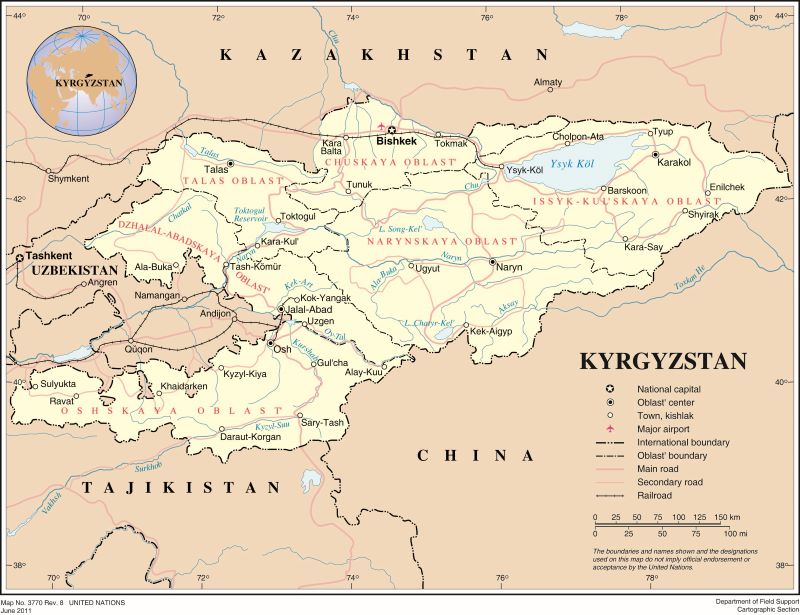Central Asia - Kyrgyzstan

Kyrgyzstan, a small landlocked country in Central Asia, has made progress in achieving the United Nations’ Sustainable Development Goals (SDGs) since adopting the agenda in 2015. Kyrgyzstan has taken significant steps to reduce poverty and inequality, promote good health and wellbeing, and provide quality education. In 2020, Kyrgyzstan presented its first Voluntary National Review (VNR) at the United Nations High-Level Political Forum on Sustainable Development, which outlined the country’s progress in implementing the SDGs and identified key challenges that need to be addressed.
Progress in SDGs

Based on Global SDG Indicators and Diagnostics 🟩 On Track 🟨 Mixed / For Review 🟥 Off Track ⬛ Trends NA
SDG Accelerators
🔷 2.2. Ensure food security. Target 2.2, focusing on food security and (mal)nutrition, holds significant importance for Kyrgyzstan. None of Kyrgyzstan’s SDG 2 targets are on track; most are off track. Despite significant progress in reducing prevalence of stunting in children (from 18% in 2010 to 11% in 2020), the prevalence of anaemia among women remains high (around 35%), reflecting the persistent prevalence of moderate or severe food insecurity (Target 2.1). Access to safe and nutritious food improves health outcomes (Target 3) and benefits educational achievements (Goal 4).
While irrigation is key for achieving food security, water is also central to Kyrgyzstan’s energy balance, which relies heavily on hydro power. Due to drought conditions a threeyear energy sector emergency has been declared. Ensuring food security links closely to SDG 8, creating employment and contributing to rural economic growth. Equal access to resources (Target 1.4), especially the guarantee of women’s rights to access and control resources (Target 5.a) could contribute to accelerating progress. Target 2.1 aligns with SDG 12’s emphasis on sustainable consumption and production, promoting sustainable food systems and waste reduction.
By building resilient agricultural practices (Target 2.4), Kyrgyzstan can free up more water for hydropower (Goal 7), mitigate the impacts of climate change and support climate action (Goal 13), while maintaining viability of ecosystems, especially in mountainous regions (Goal 15). Ultimately, ensuring food security fosters social stability, reduces conflicts arising from food scarcity and promotes effective food governance (Goal 16).
🔷 4.3. Quality education for everyone . In Kyrgyzstan, SDG target 4.3 aims to ensure equal access to quality technical, vocational and tertiary education. Kyrgyzstan has a high 13.2 expected years of schooling in 2021 and a high upper secondary education completion rate of around 96% over the past decade.
However, quality of education and equal access remain concerns. SDG 4.3 has important interlinkages with other SDGs, especially Goal 8, through improving employability, reducing the skills mismatch, ensuring the future readiness of people in the workforce and ultimately reducing poverty (Goal 1).
This will promote equal access to the labour market for women/girls and men and further the empowerment of women to participate in the local labour market, including by enhancing their access to science, technology, engineering and mathematics (STEM) and ICT education (Targets 5.5, 5.b). Quality technical education will equip individuals with skills aligned with labour market demands, fostering decent work and economic growth (Goal 8). Ultimately, equal access to technical education will reduce inequalities, empowering individuals, groups and localities left behind, and promoting social inclusion (Goal 10).
🔷 7.1, 7.2, 7.3. Ensure access to affordable, reliable, sustainable and modern energy for all. Access to affordable and sustainable energy is crucial for Kyrgyzstan’s development and it is an accelerator for the whole SDG agenda. Despite universal access to electricity (Target 7.1) and high share of renewables (the renewable energy share remains relatively stable close to 30% in past decade), especially hydropower in electricity generation (Targets 7.2, 7.3), vulnerabilities and issues remain evident.
Currently the country suffers from an electricity generation deficit and a presidential decree declared a three-year emergency in the energy sector. Hydropower, a renewable energy, is a mixed blessing. It requires water, which may raise issues (Target 6.5) with downstream countries. Availability of water is increasingly affected by climate change, making the supply of hydroelectricity unpredictable. Affordable and reliable energy drives economic growth, job creation and entrepreneurship opportunities (Goal 8) and sustainable industrialization (Goals 9, 10, 11). Thus, it reduces income poverty (Goal 1), including energy poverty (Target 1.4), and improves well-being.
It is vital for health care facilities (Target 3) and access to education (Goal 4). Sustainable energy sources contribute to mitigating climate change by reducing greenhouse gas emissions (Goal 13), by promoting renewable energy and supporting the transition to a low-carbon economy (Goal 12). At the same time, industrialization (Goal 9) will put a further demand on ensuring universal access to affordable, reliable and modern energy services, and on the need for possible trade-offs between energy availability and the use of renewables.
🔷 8.6. Youth employment and education. According to UN Stats, none of Kyrgyzstan’s SDG8 targets are on track. In the Kyrgyzstan context SDG Target 8.6 aligns with the goal of reducing poverty (Targets 1.1, 1.2) through promoting decent work, providing individuals with opportunities for sustainable income generation and economic empowerment.
Ensuring equal access to quality technical, vocational and tertiary education (Target 4.3) and providing relevant skills (Target 4.4) is one of the key drivers of this target. Kyrgyzstan has a high 13.2 expected years of schooling in 2021 and high upper secondary education completion rate (which was around 96% over the past decade).
However, quality of education and equal access remain concerns. Promoting equal access to the labour market for women/girls and men and the further empowerment of women to participate in the local labour market, including by enhancing their access to STEM and ICT education (Targets 5.5, 5.b).
Economic policies (Target 8.3), facilitation of business development and trade (Targets 8.a, 17.10, 17.11) and building economic institutions (Target 16.6) will accelerate progress.
🔷 11.1. Safe and affordable housing and basic services. In Kyrgyzstan quality of life—in terms of affordable housing and basic services—varies significantly by regions. According to UN Stat data, only half of the rural population (57%) is using safely managed drinking water services, compared to virtually universal access in urban areas (91%). According to national data, 35% of the population have sustainable access to sanitation facilities, ranging from 98% in Bishkek city to less than 1% in the Osh region.
Despite universal access to electricity (Target 7.1) and a high share of renewable hydropower in electricity generation (Target 7.2), vulnerabilities and issues remain evident. Non-sustainable urbanization and lack of affordable fuels result in high air pollution in urban areas, affecting the health of the population (Target 3.9).
Providing universal access for all to adequate, safe and affordable housing and basic services requires investments in resilient infrastructure (Target 9.1, 9.4) to prepare them for climate change and disasters (Targets 1.5, 13.2). Recognition and redistribution of unpaid care work, through social protection policies and the development of adequate care infrastructures and services (Target 5.4). It will contribute to the reduction of inequalities (Goal 10) and to reducing conflicts (Goal 16). It also could have a positive impact on the sustainability of ecosystems (Goals 6, 14, 15).
The dynamic map shows SDG Accelerators for Kyrgyzstan.
Use buttons to highlight certain paths and Focus to explore certain targets
See 📊 SDG Push Diagnostic for Kyrgyz Republic
Read the 📑 Integrated SDG Insights Report for Kyrgyz Republic
Voluntary National Reviews
🌐 Voluntary National Review 2025 (forthcoming)
🌐 Voluntary National Review 2020
